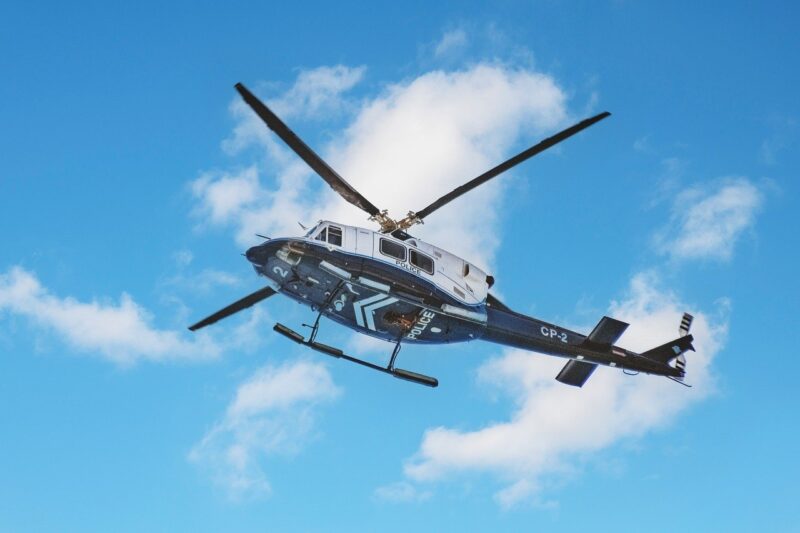The Secrets of Helicopter Pilots: Maneuvering in Challenging Conditions
November 11, 2024

Helicopter piloting is a skill that combines technical proficiency, keen situational awareness, and an understanding of complex environmental variables. Maneuvering in challenging conditions is part of the everyday reality for many helicopter pilots, whether they are involved in search and rescue missions, medical evacuations, or aerial firefighting. This article delves into the secrets behind successful helicopter piloting in adverse conditions, highlighting essential techniques, experiences, and strategies that can make the difference between success and failure in the cockpit.
1. The Unique Challenges of Helicopter Flight
Helicopters are distinct from fixed-wing aircraft in their ability to hover, take off, and land vertically. However, this versatility comes with its own set of challenges, particularly in adverse weather or complex environments. Factors such as wind shear, turbulence, poor visibility, and terrain necessitate a robust understanding of various flight techniques.
Some of the primary challenges helicopter pilots face include:
- Wind Conditions: Helicopters are more affected by wind due to their size and weight. Crosswinds and gusty conditions can make takeoffs and landings particularly hazardous.
- Poor Visibility: Whether caused by fog, rain, or smoke, limited visibility can critically impair a pilot’s situational awareness, demanding higher skills in navigation and instrument flying.
- Terrain and Obstacles: Pilots often need to navigate through rugged terrain and around obstacles, making precise control of altitude and position crucial during approaches and departures.
Being adept at maneuvering in these challenging conditions is an essential skill for any helicopter pilot.
2. Mastering Controlled Flight: Key Techniques
To navigate adverse conditions effectively, helicopter pilots must master several techniques:
a. The Art of Hovering
Hovering is a fundamental skill for helicopter pilots that requires constant adjustments to maintain a stable position. This becomes even more complex in challenging conditions. Pilots learn to make small collective and cyclic inputs to counteract forces from wind and turbulence. Understanding how to balance the helicopter’s weight and controls is critical.
b. Advanced Slope Landings
Pilots often need to land on sloped terrain where wind and other conditions can adversely affect the helicopter’s stability. Proper techniques for slope landings include maintaining a lower approach speed and being conscious of how the slope interacts with wind direction. Pilots must focus on the positioning of the helicopter’s skids for a safe touchdown and departure on uneven terrain.
c. Adapting to Wind Shear
Wind shear can be a significant concern, particularly as pilots approach or depart from high buildings, canyons, or cliffs. It refers to sudden changes in wind speed or direction. Pilots need to remain alert and anticipate changes by using wind indicators and adjusting the flight path as necessary. Knowledge of how to utilize altitude to regain control after an unexpected shift can prevent accidents.
d. Utilizing Instrument Flying Skills
In poor visibility conditions, the ability to navigate using instruments becomes paramount. Helicopter pilots must be proficient in reading instruments to control altitude, direction, and speed effectively. Training in instrument flight rules (IFR) equips pilots with the necessary skills to manage their flight path without relying exclusively on visual cues.
3. The Importance of Situational Awareness
Situational awareness is a challenging skill that requires constant monitoring of both external and internal environments. Helicopter pilots must maintain a comprehensive understanding of:
- Weather Conditions: Staying informed about local weather patterns and recognizing how they can impact flight is crucial for safety. Utilizing forecasting tools can aid in decision-making efforts before takeoff or during flight.
- Area Hazard Identification: Pilots should be familiar with the regions they operate in, identifying potential hazards such as power lines, towers, or terrain changes that might affect flight paths.
- Crew Communication: Effective communication with onboard crews ensures immediate responses to changes in flight dynamics or emergencies. A well-coordinated crew can facilitate smoother operation under pressure.
Enhancing situational awareness comes with experience and requires continual practice to refine decision-making capabilities.
4. Effective Emergency Response
High-pressure situations can arise despite all preparations. Pilots must be equipped with strategies to handle emergencies effectively:
a. Automatic Emergency Procedures
Pilots should familiarize themselves with automatic emergency procedures that include appropriate reactions to engine failures, rotor malfunctions, or adverse meteorological conditions. Training simulations are vital to prepare for these scenarios.
b. Prioritization of Tasks
In emergencies, pilot workload increases dramatically. Following task prioritization during crises (e.g., assessing the aircraft state, communicating with air traffic control, making emergency landings) is essential for managing panic and ensuring safety.
c. Controlled Descent Techniques
In the event of an emergency requiring descent or landing, pilots must utilize controlled descent procedures to maintain stability and control. Maintaining a steady rate of descent and proper speed helps manage risks during landing attempts.
5. Training and Experience: The Cornerstones of Safety
One cannot emphasize enough the importance of thorough training and continuous learning in the realm of helicopter piloting. Pilots must engage in:
- Simulation Training: Flight simulators replicate real-world scenarios, enabling pilots to practice responses to adverse conditions in a controlled environment. These scenarios can cover a variety of challenges, including severe weather and equipment malfunctions.
- Currency in Flight Hours: Regular flight practice is necessary to maintain operational proficiency. Training in different environments and conditions allows pilots to build experience over time.
- Peer Learning and Reflections: Sharing experiences among pilots enhances collective knowledge, helping others learn from past challenges and successes. Mentoring can also be beneficial for new pilots navigating their training journeys.
Ultimately, training translates into the confidence required to tackle difficult situations with composure.
Conclusion: The Essence of Skilled Helicopter Piloting
Helicopter pilots face many challenges, particularly when maneuvering in difficult conditions. Mastering hovering, understanding wind shear, implementing situational awareness techniques, and knowing how to respond to emergencies are critical components that shape a successful pilot. Additionally, dedication to continuous training and improvement can lead to exceptional caliber in the field.
As technology evolves and enhances helicopter design and performance, the responsibility on pilots remains constant. Those who invest effort into developing their skills, practicing techniques, and learning from experiences will continue to excel in the face of challenge. Helicopter flying is an art as much as it is a science, requiring passion, precision, and unwavering commitment to safety.







